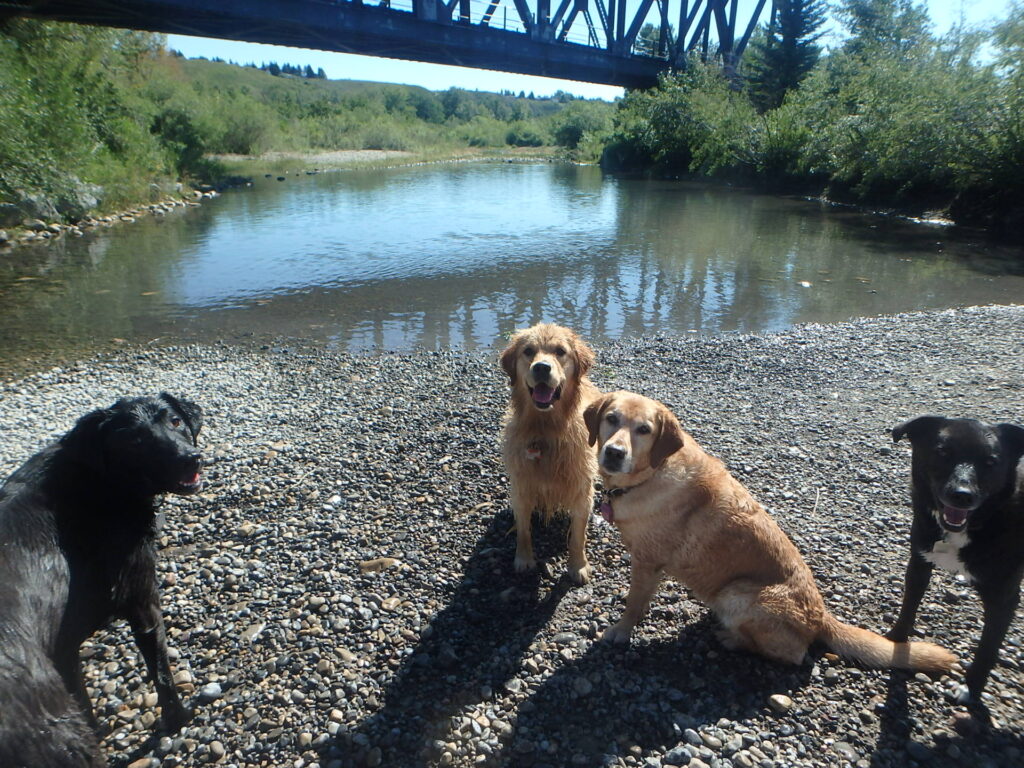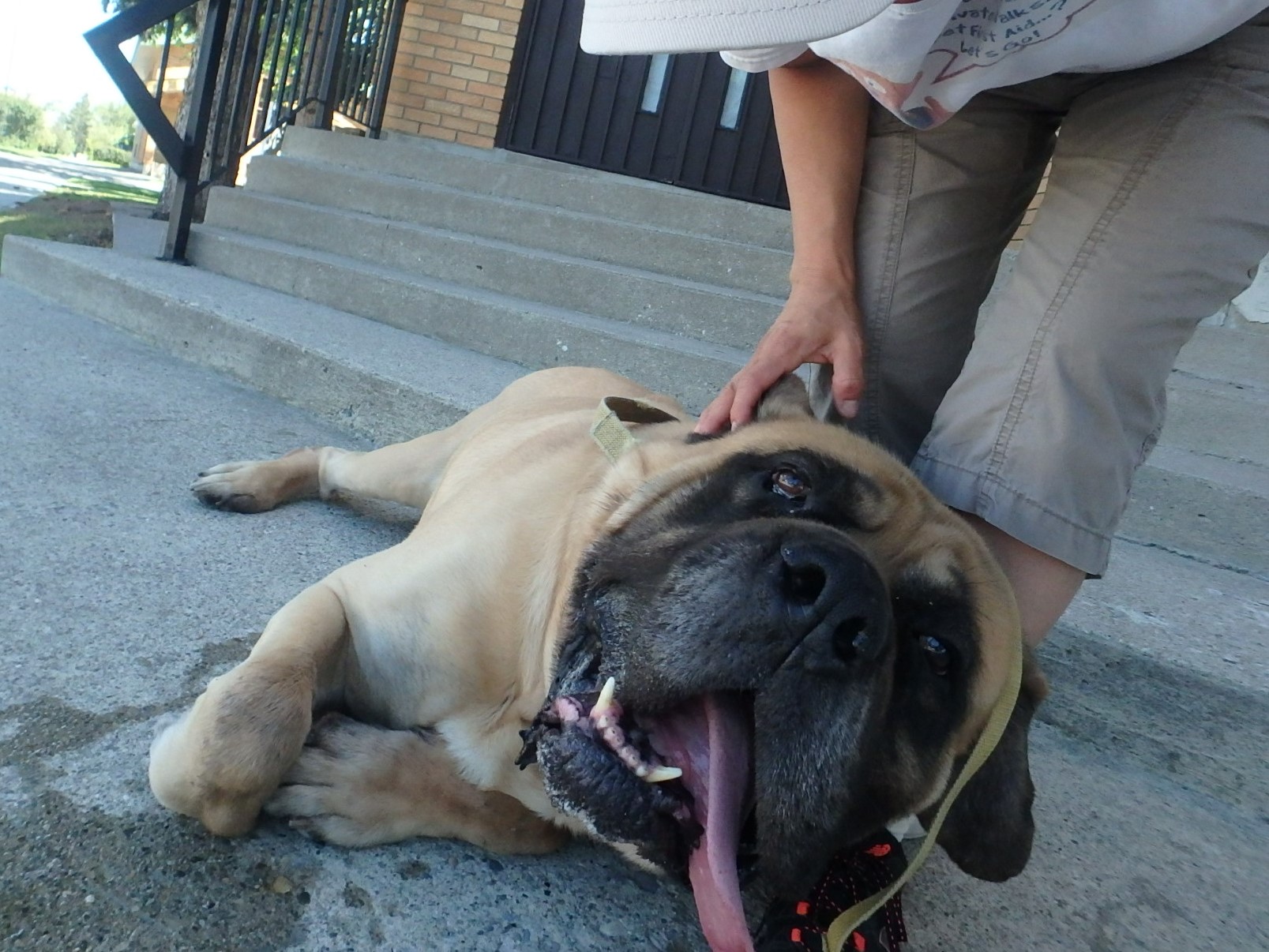In previous articles I mentioned the dangers of leaving your dog in the car as well as tips to prevent heat stroke in dogs. Today I will go into some details about what heat stroke is, how it affects your dog, signs and symptoms and what to do about it.
Remember that Dog heat stroke can strike in minutes on hot, humid days, and may turn fatal if it’s not treated promptly.
But first lets explore just What is Heat Stroke?
Heat stroke is a condition that occurs when dogs are no longer able to maintain their normal body temperature of approximately 101F and it rises to 105F and beyond.
At body temps above 106F a dog’s internal organs will start to breakdown, and if he’s not cooled quickly enough, he will die. Even if you can bring their temperature down, they may have suffered irreversible internal organ damage. Cause of death is often Heart Failure.
As mentioned in previous articles, your dog regulates their temperature primarily through panting. Evaporation of moisture from the tongue cools it. But on hot, humid days evaporation is slower and they are unable to cool their bodies effectively. The result is their body temperature can begin to rise rapidly.
If your dog’s temperature exceeds 106F, you only have precious minutes to save their life.
Symptoms of Dog Heat Stroke
If your dog is experiencing heat stroke they will progressively show these signs:
- Excessive panting
- Pale gums, bright red tongue
- Disorientation – dog doesn’t respond to his name
- Increased heart rate
- Thick saliva
- Vomiting
- Breathing difficulties
- Collapse
- Coma
- Death
Treatment for Heat Stroke in Dogs
A mentioned in a few recent articles, the most common cause of Dog Heat stroke occurs because a dog is confined, either in a car, kennel or crate; the first thing to do is remove the dog from where he was confined.
Get the dog out of the sun and into the shade. Give access to cool, but not cold, water and don’t let him drink too much.
Cool him with cool, but not cold, water – either immerse him in a bath, gently hose him or apply cool towels to his body.
Important: do not leave wet towels on your dog and do not use very cold water – both prevent your dog form being able to cool himself.
Move your dog to where there is cool air circulating, like an air conditioned room or stand them in front of a fan. The cool circulating air will help your dog to reduce their internal temperature.
Keep monitoring your dog’s temperature with a rectal thermometer; once it returns to normal stop the cooling process. You may over-cool the dog if you’re not careful.
While you are cooling your dog, have someone telephone your local emergency vet hospital, explain the situation and perform any additional treatment they suggest before taking them to the hospital.
Even if you are able to to reduce your dog’s temperature, take him to the vet for an examination. The internal damage to the dog’s organs might have already started even though he recovered from heat stroke. He will need to be checked for any possible health issues.
Some dogs are more prone to Heatstroke. These are:
- Young puppies and older dogs
- Overweight dogs
- Dogs with an existing illness or recovering from illness or surgery
- Dog breeds with short faces – Bulldogs, Shar pei, Boston Terriers, Pugs – have narrow respiratory systems that easily get overwhelmed in hot and humid conditions
- Double coated breeds such as Chow Chows
- Dogs bred for cold climates such as Malamutes, Huskies and Newfoundlands
Heat stroke is usually 100% preventable. Remember that the outside temperature can be a lot warmer than what you see on your thermometer or the weather forecast. On days with higher humidity the relative temperature is much higher; especially for your dog.
Dogs really don’t know when to quit. Try and keep a dog’s activity to a minimum on hot and humid days. If you can, exercise dogs early in the morning or later in the evening when the temperature is cooler. If you can’t do it at these times, consider hiring a professional dog walking service.
Dogs Swimming in Calgary’s Bowmont Park

If possible keep your dog indoors during the heat of the day in a well ventilated or air conditioned area or the basement if it’s cool and clean. If you do leave your dog outside during the day, make sure there is plenty of shady areas to lie in and he has access to cold water. Remember that a bowl may tip over or not hold enough
for the whole day. Consider an automatic water dispenser or a tethered bucket that will not tip. A plastic wadding kiddie pool of water for them in a shady part of the yard can really help. There they can lie to keep cool, otherwise periodically spray him gently with cool water from the hose. Or if you’ve got the day off and it’s hot outside, take them swimming.
As always I’d love to hear your comments or stories related to this article. Please feel free to let us know what you’re thinking. And keep cool Calgary.

